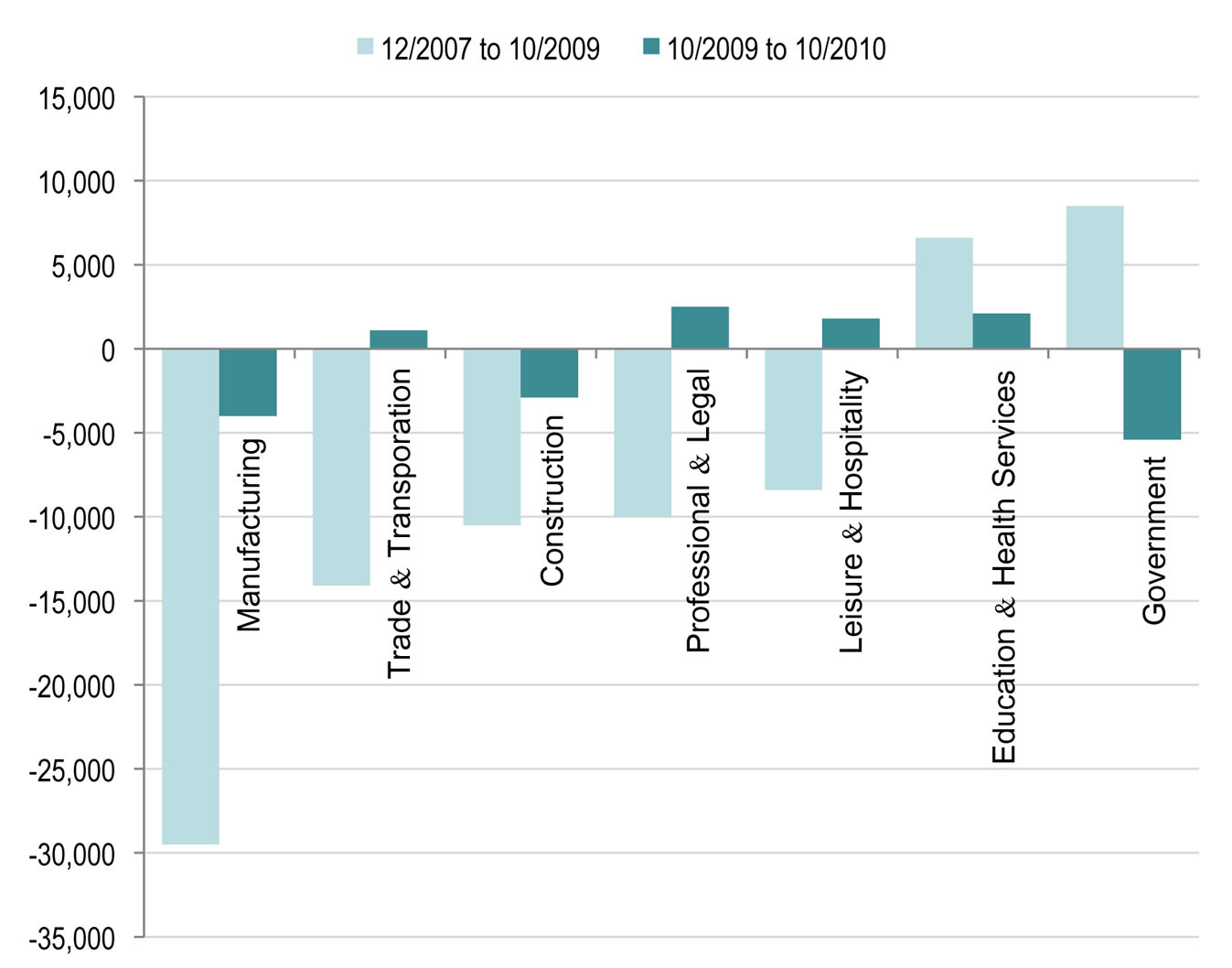Three industries have seen job loss over the last year compared to four industries with modest increases. In Mississippi, housing starts remain low and show no signs of substantially improving soon. The result is a continued decrease in construction employment over the last year. Like construction, manufacturing jobs decreased in both periods.
Health care and education services experienced job gains during both periods.
In this series, Government includes public school teachers, law enforcement officers, highway patrol, librarians, and local officials. Government is the only series to increase in the beginning of the recession and then substantially decrease over the last year.
In recent months, private sector employment has grown modestly, but Mississippi’s economic recovery remains weak. Revenues for Fiscal Year (FY) 2012 are only projected to increase 1% over FY 2011. Inadequate revenues have directly affected public sector jobs as seen in the decline in government employment over the last year.
Mississippi’s public workers – teachers and troopers for example – provide important services and put money back into local economies. When inadequate revenues result in job loss, Mississippi’s families, communities, and residents are negatively affected – underscoring the need to be creative and identify additional revenue.
Source:
Department of Labor. Regional and State Employment and Unemployment Summary November 2010.
Author:
Sarah Welker, Policy Analyst






